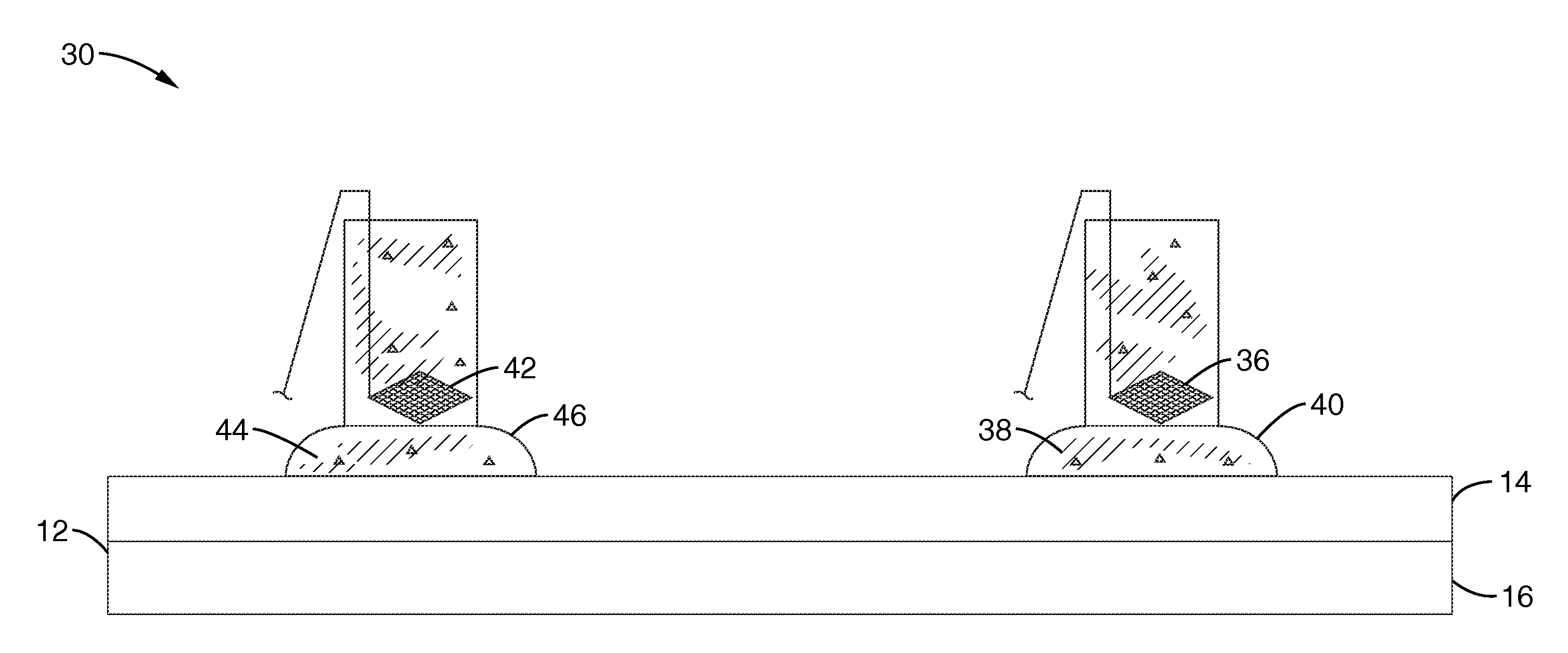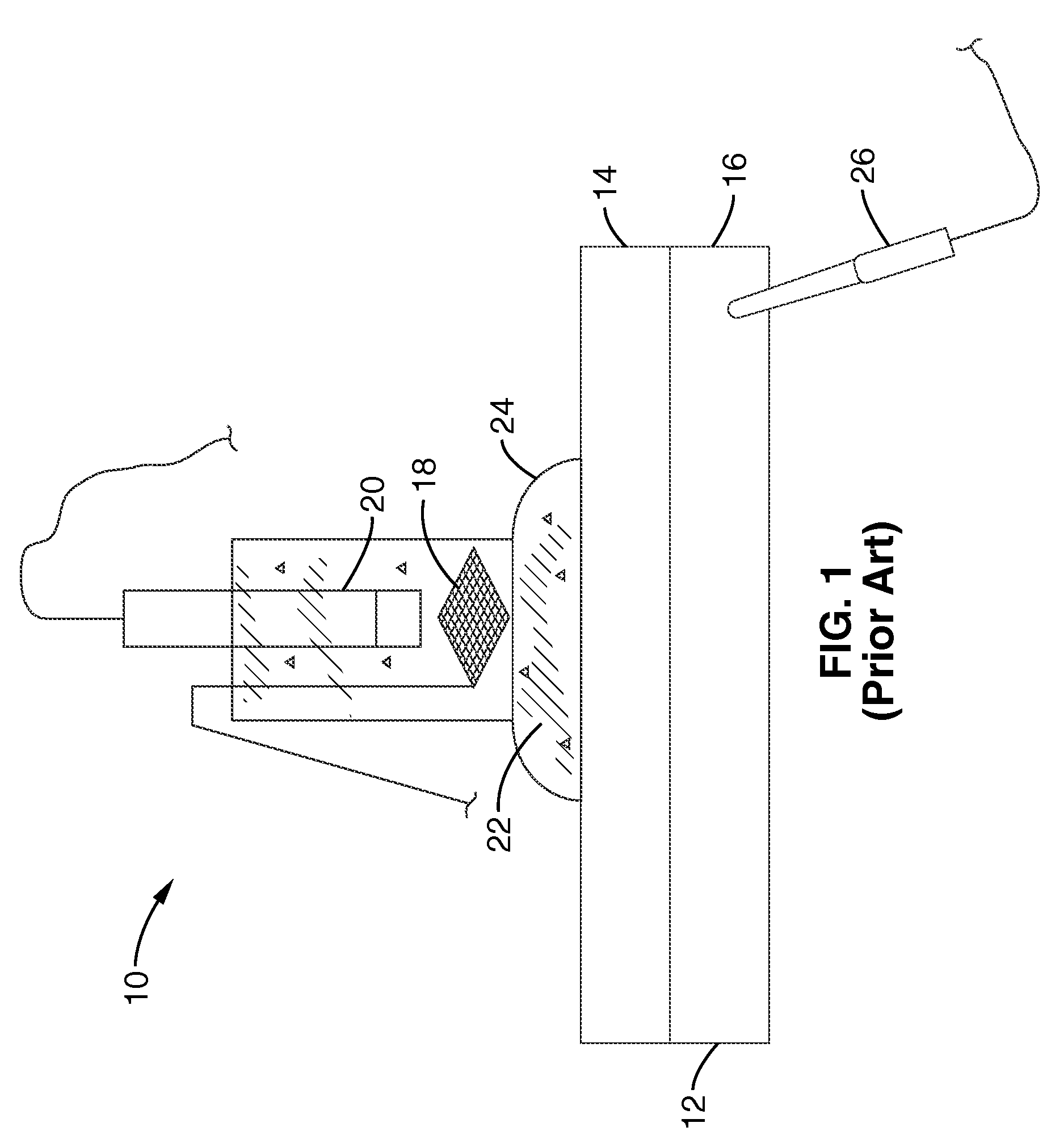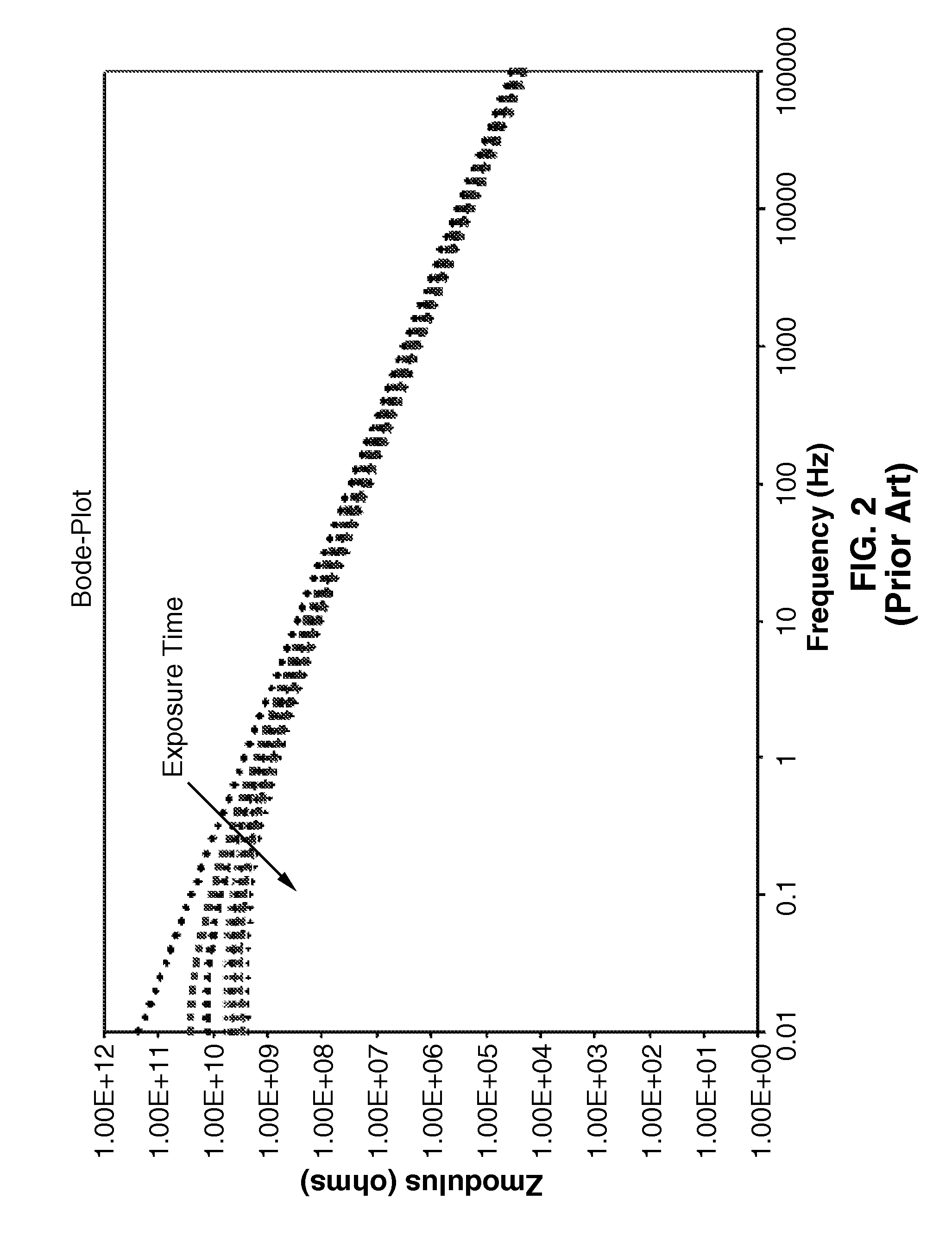Electrochemical impedance spectroscopy method and system
- Summary
- Abstract
- Description
- Claims
- Application Information
AI Technical Summary
Benefits of technology
Problems solved by technology
Method used
Image
Examples
Embodiment Construction
[0048]Referring more specifically to the drawings, for illustrative purposes the present invention is embodied in the apparatus generally shown in FIG. 3 through FIG. 8. It will be appreciated that the apparatus may vary as to configuration and as to details of the parts, and that the method may vary as to the specific steps and sequence, without departing from the basic concepts as disclosed herein.
[0049]In order for EIS measurements to become a reliable technique for corrosion field testing a new two electrode testing technique has been developed.
[0050]FIG. 3 is a schematic illustration of a dual cell electrode system 30. Panel 12 has a coating 14 applied to substrate 16. Working electrode 36 is suspended in an electrolyte 38 in a vessel 40 made of a non-conducting material such as glass. The bottom of vessel 40 and electrolyte 38 are in direct contact with coating 12. Working electrode 36 does not contact substrate 14. A counter-reference electrode 42 is suspended in electrolyte ...
PUM
 Login to View More
Login to View More Abstract
Description
Claims
Application Information
 Login to View More
Login to View More - R&D
- Intellectual Property
- Life Sciences
- Materials
- Tech Scout
- Unparalleled Data Quality
- Higher Quality Content
- 60% Fewer Hallucinations
Browse by: Latest US Patents, China's latest patents, Technical Efficacy Thesaurus, Application Domain, Technology Topic, Popular Technical Reports.
© 2025 PatSnap. All rights reserved.Legal|Privacy policy|Modern Slavery Act Transparency Statement|Sitemap|About US| Contact US: help@patsnap.com



